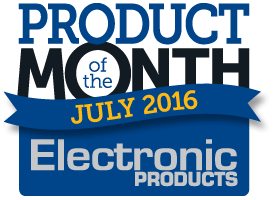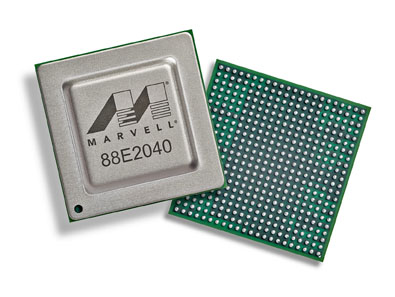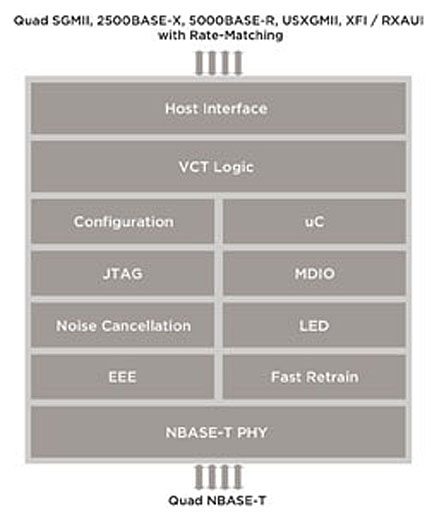
The Alaska 88E2010/40 single- and quad-port Ethernet transceivers from Marvell Semiconductor are optimized for 2.5- and 5-Gbit/s data rates over Cat5e copper cables for very cost-effective, small-form-factor networks of 100-m length and more. The devices use DSP to enable the use of existing Cat5e Ethernet cables for data rates as high as 5 Gbits/s and remove the need to rewire facilities with expensive optical cables. They are designed to be compliant with the emerging IEEE 802.3bz standard and the NBASE-T Alliance specifications.
With internet traffic increasing daily, this technology will be key for important applications, such as Ethernet switches and 802.11ac WiFi Access Points in enterprise environments. Not long ago we thought 100BASE-T would be all that any client PC would ever need – but that is most certainly not the case. 1000BASE‐T has been massively successful and is the standard Internet connection on client computers world-wide – including yours, most likely. WiFi wireless connections are also speeding up quickly. Most standard Wi-Fi campus networks moved in 2013-2015 to 802.11ac, providing up to 3.47 Gbits/s, and are now moving to 802.11ac W2 that works at up to 6.93 Gbits/s.
All this means the feed from the campus/corporate Ethernet switches to the Ethernet routers or wireless access points can no longer be a single or dual 1000BASE-T cable. This interface now needs to carry 2.5 or 5 Gbit/s data to support faster end user access.
At the recent Interop in Las Vegas there were a growing number of vendors supporting 2.5 and 5 Gigabit Ethernet over twisted pair copper cabling. The NBASE-T Alliance showed off an assortment of 2.5 and 5GBASE-T products – from switches to NICs. Another key application is for cellular base station backhaul.
The Marvell ICs support Category 6-, Category 6a-, and Category 7-type cables, as well as Category 5e. They support a variety of host interfaces (2500BASE-X, 5000BASE-R, SGMII), as well as 10G host interfaces such as USXGMII interface and XFI/RXAUI, with rate-matching.

The ICs are also compatible with Energy Efficient Ethernet, IEEE 802.3az. They come in 10 x 12-mm and 23 x 23-BGA packages. The chips have built-in cable diagnostic capabilities and are fully backward compatible with legacy Ethernet (1000/100/10 Mbits/s) on the line side. Their bit-error-rate is better than 10–15, and they include Integrated Virtual Cable Tester technology for troubleshooting and performance monitoring.

The NBASE-T Alliance was founded in 2014 and now has more than 40 member companies, including Marvell. Member companies have products that include physical layer ICs (PHYs), processors, connectors, controllers, Ethernet switches, FPGAs, Power-over-Ethernet ICs, cables, and test equipment. The NBASE-T solution includes PoE (Power over Ethernet).
Each month, the editors at Electronic Products nominate the most compelling new products and vote to determine a single winner. During the nomination process, the editors look beyond the technical specifications of a product to evaluate technological advancements, the potential impact on target industries and applications, and the importance to electronic engineers.
Advertisement
Learn more about Marvell Semiconductor





